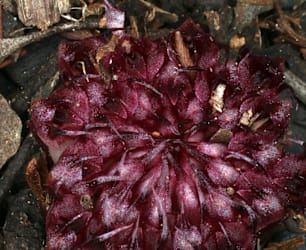Continuing in the theme of obscure insect orders that I tend to ignore, this month it’s Strepsiptera (literally ‘twisted wings’). It’s one of the least diverse of the 28 insect orders, with only about 600 species known, including 160 in Australia. I suspect that none of you have heard of them but that’s not surprising – they are tiny, the males cannot feed, so die within a few hours, and most of the females live as maggots inside other insects, with only their heads sticking out of the hosts.
Strepsiptera males have only one pair of wings, like flies but, unlike flies, the back pair of wings is fully developed, with the front pair reduced to a small stub – in flies it’s the other way round. They are feeble fliers. To find a female, the males have enormous (relatively) candelabra- or antler-like antennae full of sensory cells to pick up the smell of the female. Males also have weird eyes, which are multiple fully functional eyes on the same stalk.
I’ve seen males in flight twice – the first time was inside an insect flight trap and I was so excited to see it I fell over the trap guy-ropes, demolishing everything.

The strepsipteran life cycle is pretty crazy. Males mate with females by stabbing them around the head, to release sperm randomly into the female body. The thousands of tiny eggs hatch inside the mother (who is inside the host insect) and the larvae eat the mother’s insides, hollowing her out. They emerge from the dead mother’s head as very active normal-looking larvae with long legs. These run around until they find the correct host, then dissolve a hole through the host’s body. They then change into legless maggots. Males emerge from the host but females remain embedded. Parasitism causes the host insect to become sterile.
Altogether yucky.
Strepsiptera parasitise a wide variety of hosts, including silverfish, leaf hoppers, ants, cockroaches, crickets, flies and bees. Just recently the first bee-parasitising type has been discovered in Australia, showing how little we know about these strange creatures – see here.






